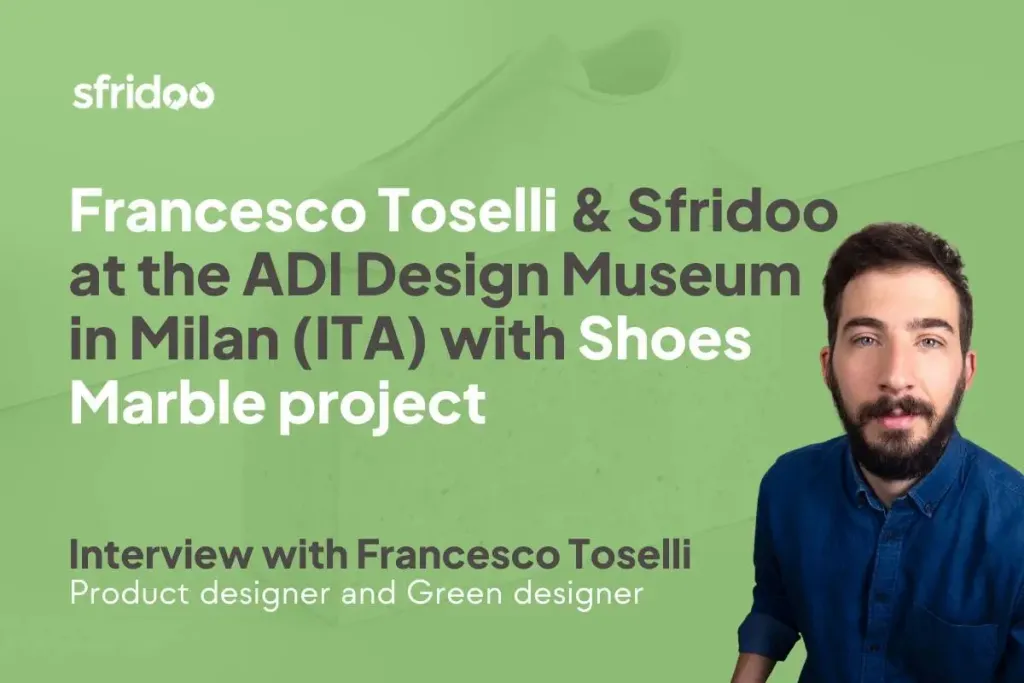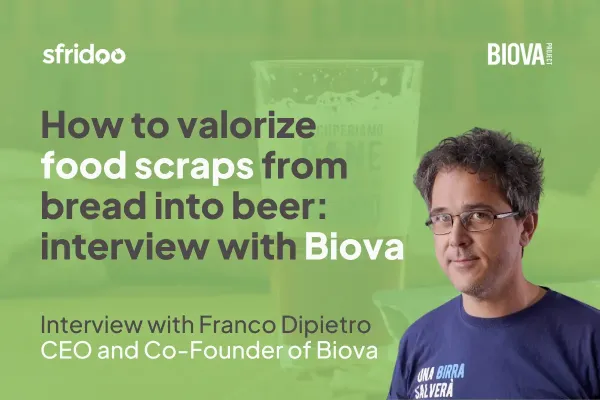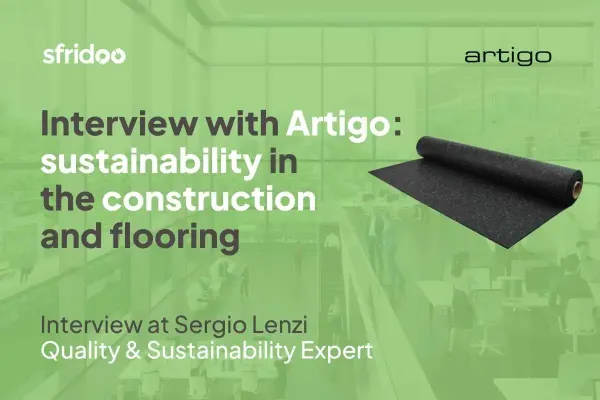An interview with Francesco Toselli: how to valorize waste from the fashion industry with a view to circularity
We interviewed Francesco Toselli, product designer and eco-designer, about the “Shoes Marble” project in collaboration with Sfridoo.
Francesco told us in detail about the project and how the idea of making a production waste, from the fashion industry, into a design object with a strong aesthetic impact was born.
Within this content we will discover together the concept from which it started, up to the technical explanation of the material made.
Francesco, can you explain where the project “Shoes Marble” originated from?
It all started from the request of a well-known brand operating in the fashion industry.
Its need was to be able to valorize one of its production waste, turning it into a new resource, so as to give it a second life.
How did the idea of creating this innovative material come about?
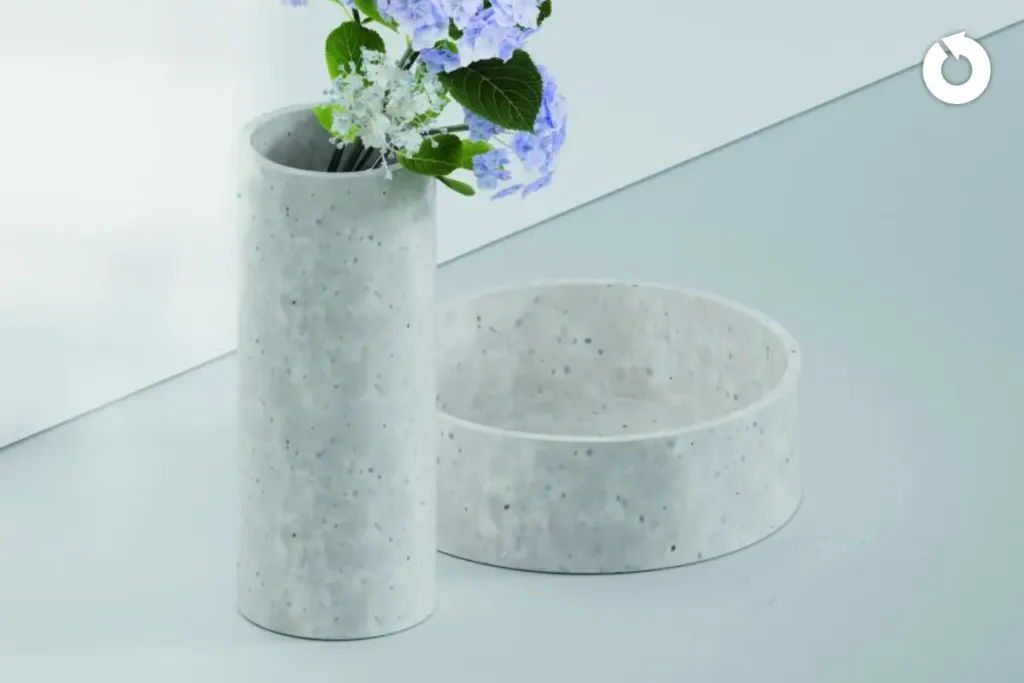
The approach to defining the material was dictated by several phases of experimentation, within which we did tests by mixing the waste with numerous binders.
We reduced the waste into various particle sizes until it was pulverized using mills.
We then mixed the resulting material with other materials such as cement, white cement, gypsum, marble, paper, polyurethane binders, and adhesives, obtaining very different materials.
Once this part of testing was finished, we had three possible application scenarios on our hands, among which the company indicated that of processing the waste with cementitious materials.
Can you tell us what parties were involved in the project?
In addition to the work done by me as a professional and expert in product design, there were three parties involved in the project:
- Sfridoo for the part of technical know-how, material supply in accordance with the reference company in the sector, and for the opportunity to take advantage of a wide network of companies already working in the Circular EconomyThe circular economy is an economic model involving a production and consumption system that involves sharing, lending, reusing, repairing, reconditioning and recycling existing materials and products for as long as... More sector.
- The company that commissioned the work and provided us with the scrap to be enhanced.
- A company specializing in cement processing, to which we provided all the guidelines for making prototypes of the material.
What role did Sfridoo play in the project?
The role played by Sfridoo has been crucial.
Collaboration with the team has been going on for years now, as our expertise is often complementary.
Sfridoo’s expertise on the various technical aspects related to material enhancement and the possibilities offered by its network of circular enterprises should be highlighted.
I as a designer added the component more related to product development and that of empirical experimentation to achieve a material with an interesting aesthetic.
Can you describe to us the technical characteristics of the material?
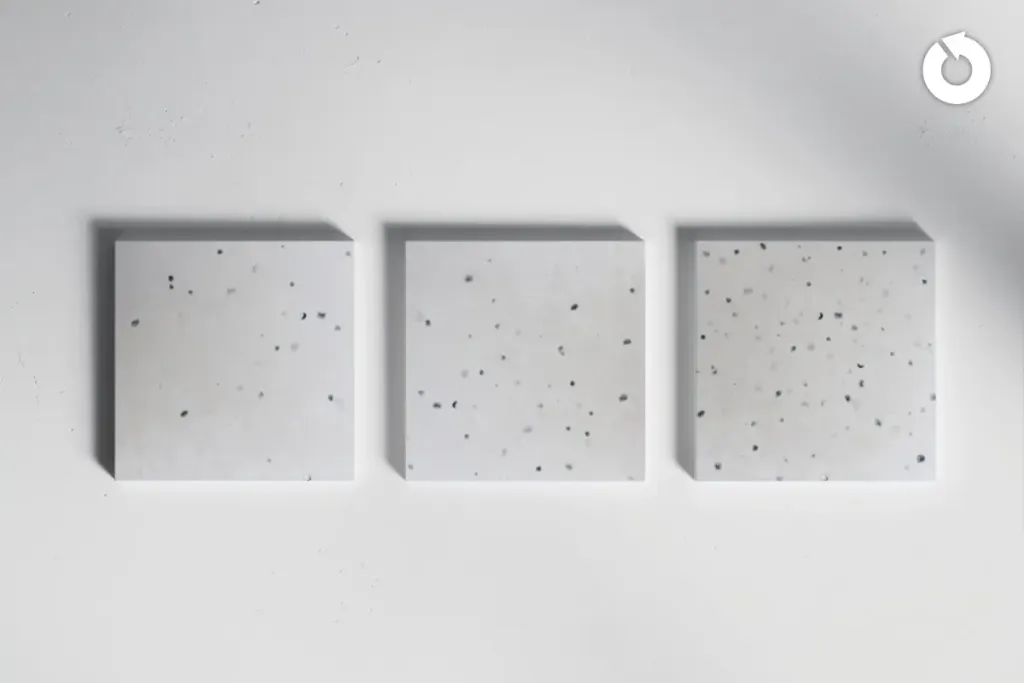
The specifications of this material are truly unique.
In fact, the material has similar characteristics to the concrete it is made of in terms of strength and pressure, and is significantly lighter.
The waste within the material has helped to create a new aesthetic of a material such as concrete.
Finally, the material turns out to be workable in a variety of ways: sheet, in planes, and with a three-dimensional mold.
Why did you call this material “Shoes Marble”?
The name came to us during the experimentation phase.
Once we had done the first tests with cementitious materials, we had noticed that the waste deposited within the color mixture unevenly, making the aesthetics of the material really interesting.
It seemed to us that this artificial pigmentation gave the material a very natural aesthetic, as if it were a material derived from a freshly mined quarry.
We therefore wanted to associate through the name the neo-material with marble and its purity.
What feedback did the material receive from the audience?
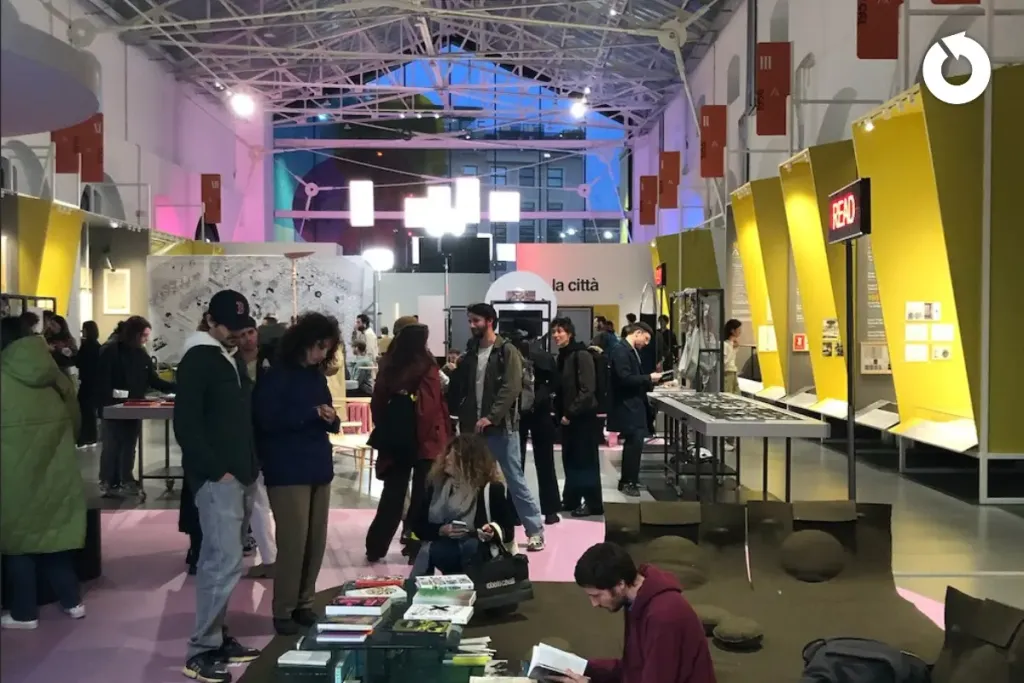
The invitation to participate in the exhibition “Italy: a news collective landscape” at the ADI museum in Milan was an excellent opportunity to gather initial feedback on the project.
The public responded very positively, taking an interest in the history of the material and its technical and aesthetic peculiarities.
The positive feedback is indicative of the trend, which was also very visible at this year’s Salone del Mobile, that sees the focus on material and the importance of circularity also increasingly present in products.
Valorise your production waste

With Sfridoo® , you reap the benefits of the Circular Economy, reaping economic, fiscal and environmental benefits by collaborating with other companies in the network.
Start nowBuy and Sell Industrial Waste

Sfridoo Marketplace helps your company find new partners to maximise the value of your waste, by-products, secondary materials and company stock leftovers.

Simone Tabellini
Digital Marketing Specialist
One of the challenges of the Circular Economy sector, is to be able to clearly and effectively communicate the benefits that this economic model can give companies. By investing in it, we can increase awareness and knowledge in people.

